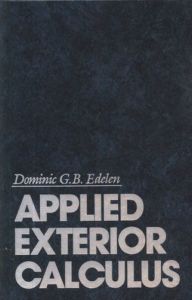Calculus, Exterior Forms, Manifolds (Mathematics), Mathematics / Calculus
This book gives an applied introduction to exterior calculus for upper division undergraduates and beginning graduate students. Development is operational with an emphasis on computation proficiency and elementary geometric notions. Consideration is limited to local questions. The book also features fully worked out examples and problems with answers.
The book develops the theory of differential forms from several perspectives, culminating in highlights of many applications in physics, including a chapter on gauge theory and a chapter on electrodynamics. He gives the development of exterior calculus in a very readable and comprehensive manner. One thing I found particularly useful in this book is that he uses very cumbersome, explicit notation, which often gets swept under the rug of geometric shorthand in most texts on the subject. He does this not to be didactic but to make sure the reader understands the calculations involved at each algebraic symbol manipulation. He arrives at forms as a set of derivations over the algebra of smooth functions, and simultaneously as a set of functionals on the tangent bundle. He also uses basic physics to explain why forms are a necessary concept.
That said, there are some drawbacks to the text.
1. He doesn't always mention some of the standard terminology normally used for the objects he creates. For instance, the word "tangent bundle" is never used, he instead uses different words for the equivalent idea. Not a big deal, but one should probably consult other texts to check the words normally used.
2. He works ONLY in Euclidean space or subsets thereof, where of course the del operators form a GLOBAL basis for the tangent bundle instead of the more common case where one works on a manifold and has only local coordinate charts available. Thus, although the reader sees tensor tranformation laws, s/he does not see a definition of a general tensor or Christoffel symbols. This shouldn't be a huge drawback since the case on manifolds is only an extension of this case and so the book is a great introduction to more advanced settings.
He also keeps track of when concepts can be extended to larger algebraic settings than the cases at hand. Great book!
